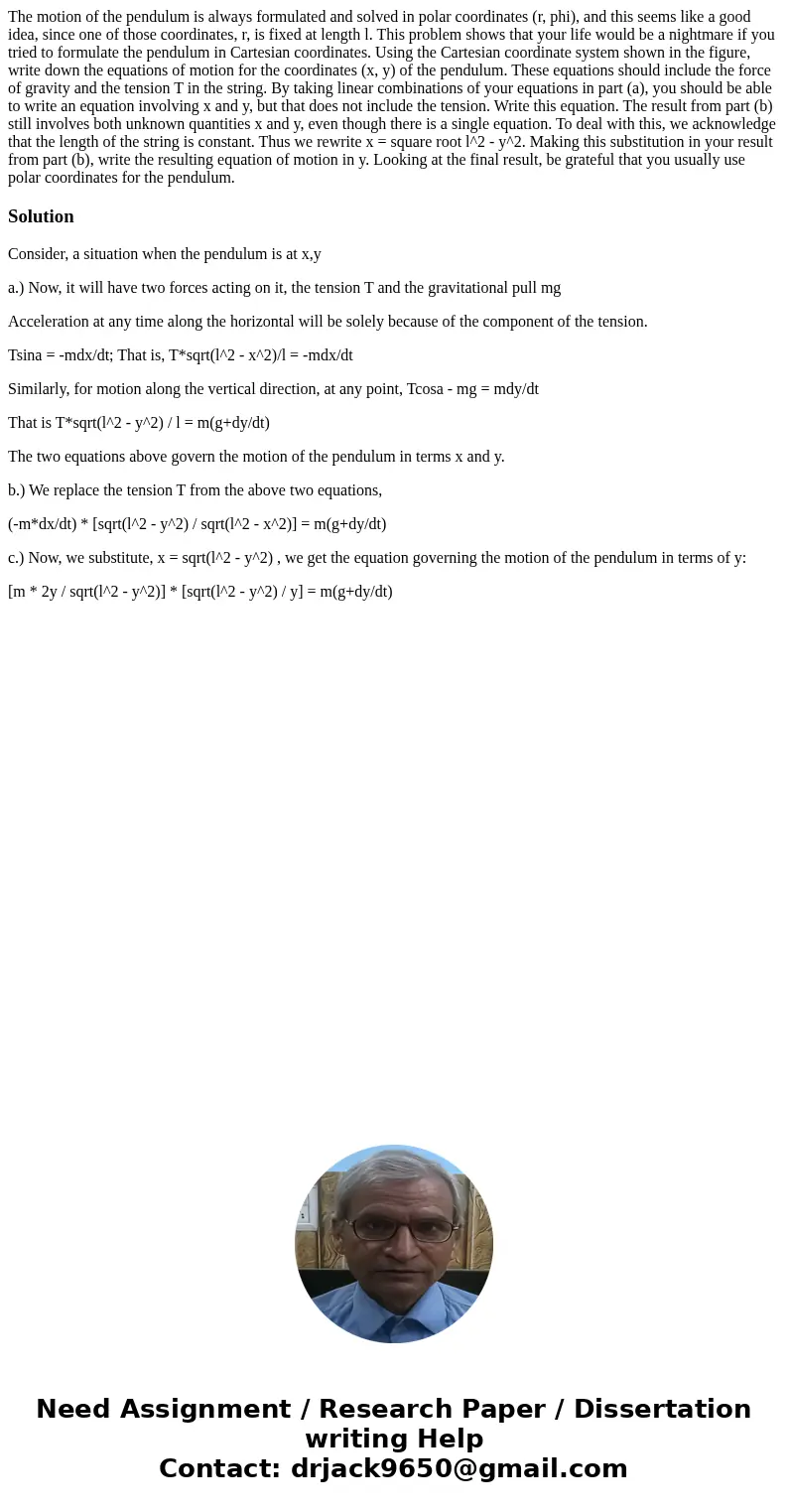The motion of the pendulum is always formulated and solved in polar coordinates (r, phi), and this seems like a good idea, since one of those coordinates, r, is fixed at length l. This problem shows that your life would be a nightmare if you tried to formulate the pendulum in Cartesian coordinates. Using the Cartesian coordinate system shown in the figure, write down the equations of motion for the coordinates (x, y) of the pendulum. These equations should include the force of gravity and the tension T in the string. By taking linear combinations of your equations in part (a), you should be able to write an equation involving x and y, but that does not include the tension. Write this equation. The result from part (b) still involves both unknown quantities x and y, even though there is a single equation. To deal with this, we acknowledge that the length of the string is constant. Thus we rewrite x = square root l^2 - y^2. Making this substitution in your result from part (b), write the resulting equation of motion in y. Looking at the final result, be grateful that you usually use polar coordinates for the pendulum.
Consider, a situation when the pendulum is at x,y
a.) Now, it will have two forces acting on it, the tension T and the gravitational pull mg
Acceleration at any time along the horizontal will be solely because of the component of the tension.
Tsina = -mdx/dt; That is, T*sqrt(l^2 - x^2)/l = -mdx/dt
Similarly, for motion along the vertical direction, at any point, Tcosa - mg = mdy/dt
That is T*sqrt(l^2 - y^2) / l = m(g+dy/dt)
The two equations above govern the motion of the pendulum in terms x and y.
b.) We replace the tension T from the above two equations,
(-m*dx/dt) * [sqrt(l^2 - y^2) / sqrt(l^2 - x^2)] = m(g+dy/dt)
c.) Now, we substitute, x = sqrt(l^2 - y^2) , we get the equation governing the motion of the pendulum in terms of y:
[m * 2y / sqrt(l^2 - y^2)] * [sqrt(l^2 - y^2) / y] = m(g+dy/dt)

 Homework Sourse
Homework Sourse